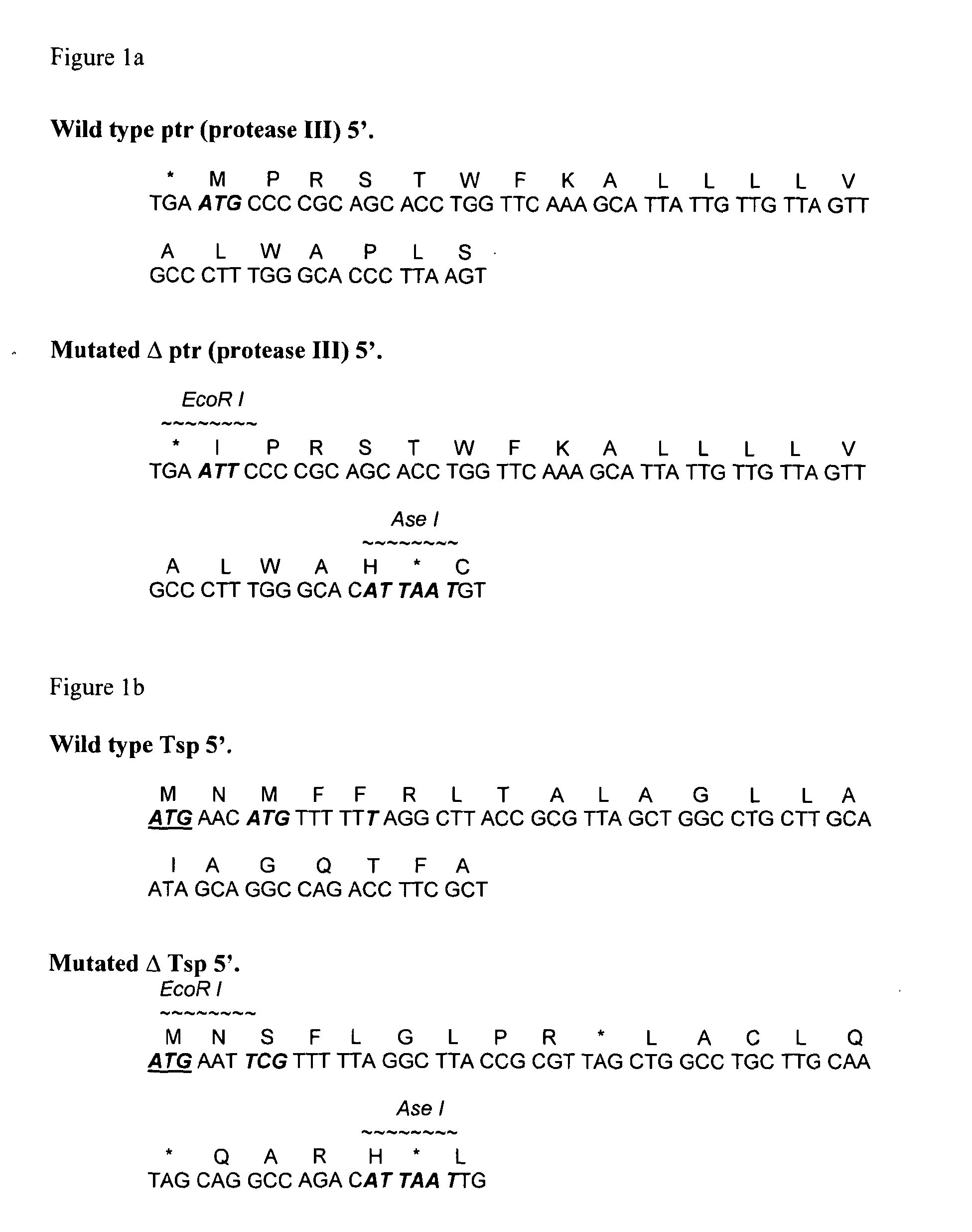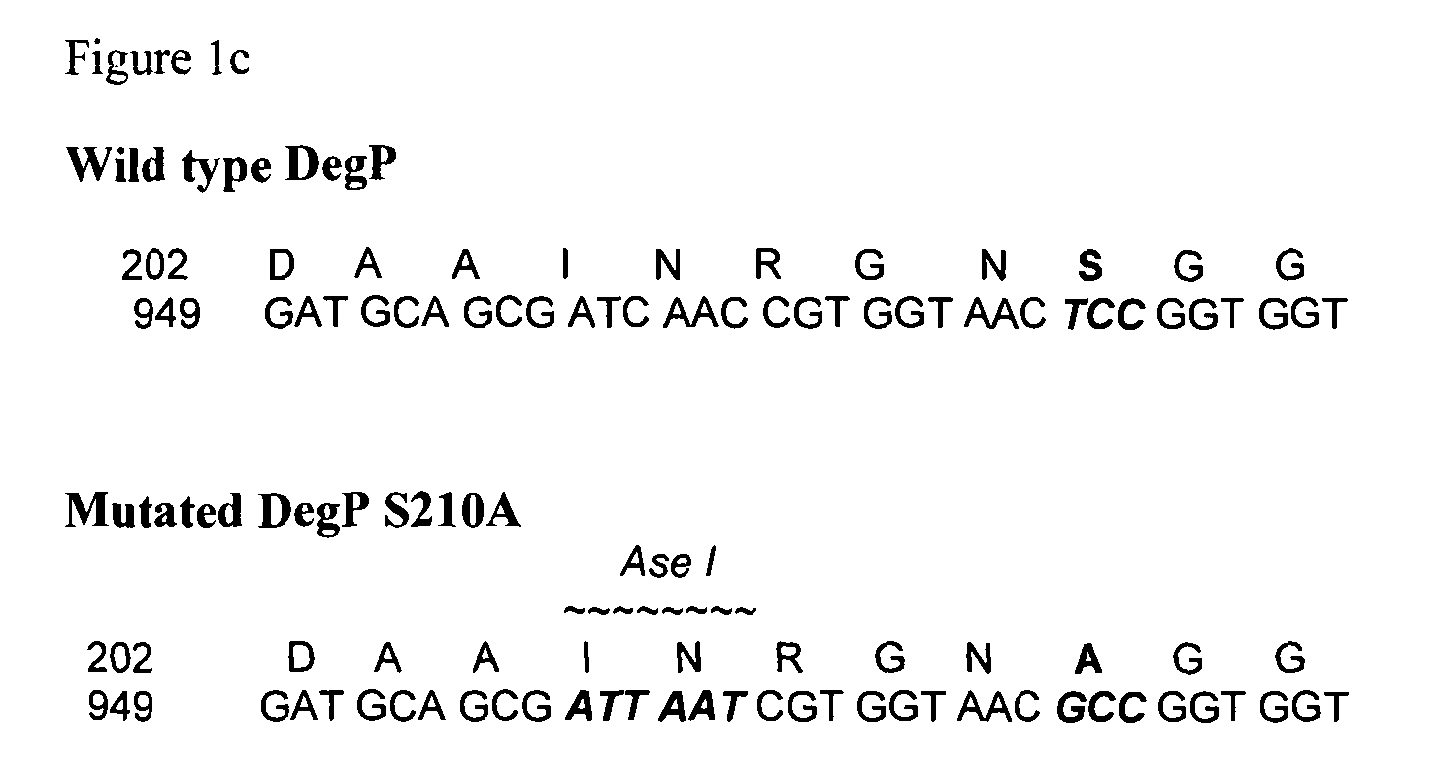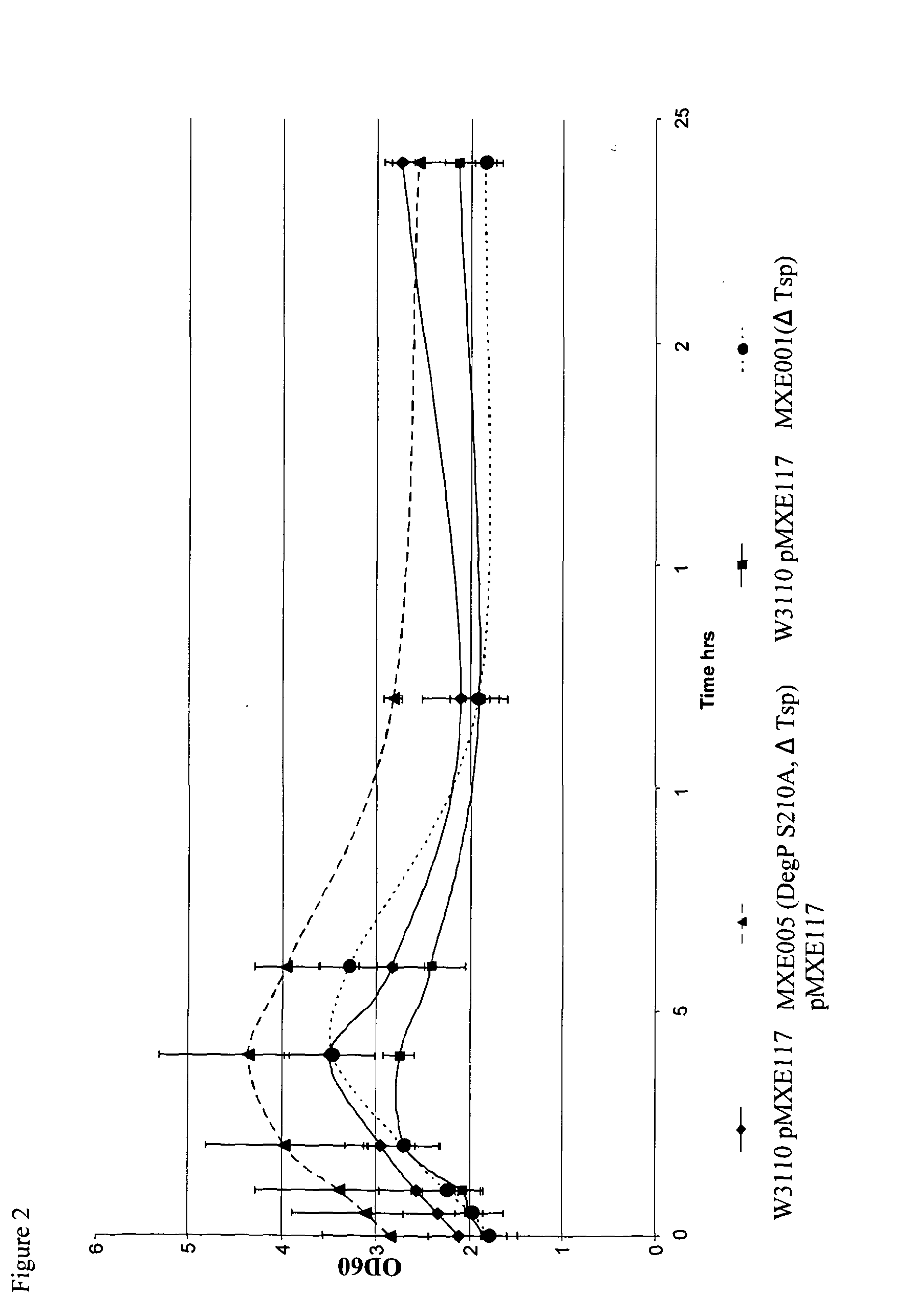Bacterial host strain
a host strain and bacteria technology, applied in the field of bacteria host strains, can solve the problems of many deleterious effects on the host cell, the difficulty of producing protease sensitive proteins, and the significant reduction of active protein yield, so as to reduce proteolysis, reduce the activity of protease, and high yield
- Summary
- Abstract
- Description
- Claims
- Application Information
AI Technical Summary
Benefits of technology
Problems solved by technology
Method used
Image
Examples
example 1
Generation of Mutant E. coli Cell Strains
[0242]The host cell strain used was W3110 genotype: F-LAM-IN (rrnD-rrnE)1 rph1 (ATCC no. 27325).
[0243]W3110A, as shown in the figures, is a different batch of W3110.
[0244]The following mutant E. coli cell strains were generated using a gene replacement vector system using the pKO3 homologous recombination / replacement plasmid (Link et al., 1997, Journal of Bacteriology, 179, 6228-6237).
Mutant E. coli Cell StrainGenotypeMXE001ΔTspMXE004ΔTsp, Δprotease IIIMXE005ΔTsp, DegP S210A
[0245]Strain MXE001 was deposited on 21 May 2009 at the National Collection of Type Cultures, HPA, United Kingdom, under Accession number NCTC13444.
[0246]Strain MXE004 was deposited on 21 May 2009 at the National Collection of Type Cultures, HPA, United Kingdom, under Accession number NCTC13447. Strain MXE005 was deposited on 21 May 2009 at the National Collection of Type Cultures, HPA, United Kingdom, under Accession number NCTC13448.
[0247]The Tsp, protease III and DegP i...
example 2
Expression of an Anti-TNFα Fab′ in Mutated E. Coli Strains Using Shake Flask Cultures
[0282]Strains MXE001, MXE004 and MXE005 were tested in a shake flask experiment comparing growth and expression of an anti-TNFα Fab′ against W3110.
[0283]The shake flask experimental protocol used was performed as follows:
Preparation of Defined Medium Adapted Cells.
[0284]A single colony was picked into 5 ml 2×PY (1% phytone, Difco, 0.5% yeast extract, Difco, 0.5% NaCl) broth plus tetracycline (Sigma) at 10 ug / ml and grown overnight at 37° C. with shaking at 250 rpm. 100 ul of this overnight culture was used to inoculate 200 ml of chemically defined SM6E medium (described in Humphreys et al., 2002, Protein Expression and Purification, 26, 309-320) plus tetracycline at 10 ug / ml, grown overnight at 30° C. with shaking at 250 rpm. 100 ul of this second overnight culture was used to inoculate a 2nd 200 ml SM6E media flask plus tetracycline at 10 ug / ml. This was grown until the culture reached an OD600 of ...
example 3
Expression of an Anti-mIL13 Mouse Fab in Mutated E. Coli Strains Using Shake Flask Cultures
[0292]Strains MXE001, MXE004, MXE005 and wild type W3110 cells were transformed with plasmid pMKC006 expressing a murinised anti-mIL13 Fab′ and tested using the same shake flask method described in Example 2 except the experiment was stopped after 6 hours instead of 24 hours.
[0293]FIG. 6 shows the expression of an anti-mIL-13 mouse Fab in MXE001, MXE004, MXE005 and W3110, where it can be seen that MXE001, MXE004 and MXE005 show higher Fab expression compared to W3110.
PUM
| Property | Measurement | Unit |
|---|---|---|
| molecular weight | aaaaa | aaaaa |
| temperatures | aaaaa | aaaaa |
| temperatures | aaaaa | aaaaa |
Abstract
Description
Claims
Application Information
 Login to View More
Login to View More - R&D
- Intellectual Property
- Life Sciences
- Materials
- Tech Scout
- Unparalleled Data Quality
- Higher Quality Content
- 60% Fewer Hallucinations
Browse by: Latest US Patents, China's latest patents, Technical Efficacy Thesaurus, Application Domain, Technology Topic, Popular Technical Reports.
© 2025 PatSnap. All rights reserved.Legal|Privacy policy|Modern Slavery Act Transparency Statement|Sitemap|About US| Contact US: help@patsnap.com



